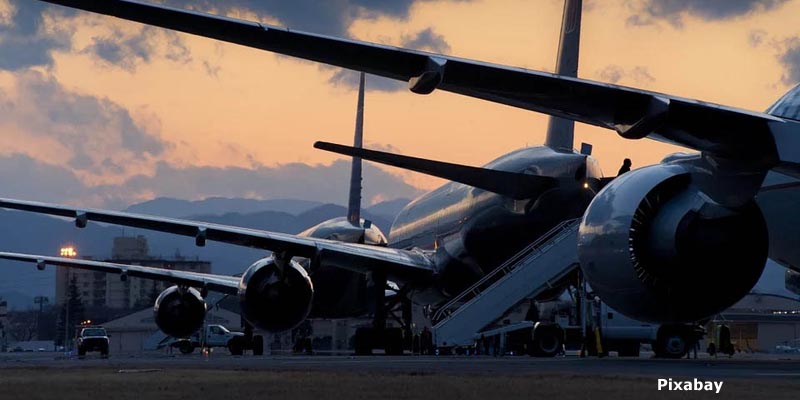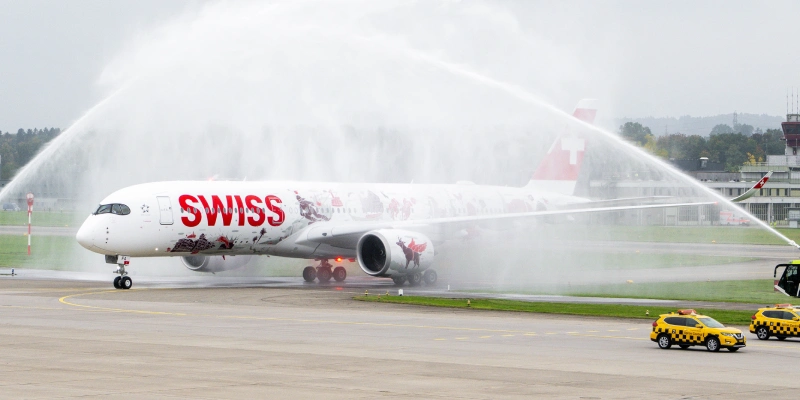The U.S. aviation industry, impacted by the trade war driven by President Donald Trump and a drop in travel demand, has intensified its lobbying efforts at the White House to secure tariff exemptions.
Sector officials have held meetings with high-ranking administration members, including the president himself, to request the reinstatement of the tariff-free regime established under the 1979 Civil Aircraft Agreement. This agreement had allowed the industry to maintain an annual trade surplus of $75 billion. The imposed tariffs have ended this decades-long advantage.
“Our government affairs team is working hard to argue why there should be an exemption,” Devon May, Chief Financial Officer of American Airlines, told Reuters.
Direct Impact on Airline Operations
The requested exemption is critical for airlines to contain costs at a time when consumers, concerned about economic growth and inflation, are spending less on travel.
Airlines have responded by reducing flights, withdrawing financial forecasts, and tightening expenses to protect their margins. Additionally, they are resisting price increases for aircraft and parts pushed by manufacturers and engine suppliers seeking to pass on tariff costs.
Some have even considered returning leased aircraft and deferring new deliveries.
“It’s very difficult for us to accept paying tariffs on these aircraft,” May emphasized. “It simply doesn’t make economic sense.”
Manufacturers Also Under Pressure
Aircraft and engine suppliers have assured shareholders they will not absorb tariff costs, escalating tensions with their airline customers.
Boeing anticipates an annual fee impact of less than $500 million. GE Aerospace estimates a burden in excess of $500 million, while RTX projects about $850 million in additional costs.
These companies are relying on cost-mitigation strategies, such as price hikes and leveraging their strong order backlogs.
Larry Culp, CEO of GE Aerospace, warned airlines against delaying deliveries: “There are plenty of other companies ready to take their place,” he told Reuters.
Airlines on Alert Over Aircraft Tariffs
As of late March, American Airlines had 14 aircraft deliveries scheduled for this year from European manufacturer Airbus and Brazil’s Embraer. Some of these models, including the Airbus A321XLR produced in Europe, would be subject to tariffs.
“It’s really hard to imagine paying an additional 10% or more on our major capital costs,” May noted.
Delta Air Lines has also rejected paying tariffs on new deliveries, arguing it would disrupt their financial calculations.
Even aircraft assembled in the U.S. are not exempt, as manufacturers must pay tariffs on imported components. Boeing, for example, is paying a 10% tariff on supplies from Italy and Japan. United Airlines reported that Airbus has faced tariffs on aircraft produced in Alabama.
Weakening Demand and Fare Adjustments
An industry executive noted that airlines might have absorbed tariffs if travel demand were strong. However, bookings have declined over the past two months, weakening their pricing power.
According to U.S. Labor Department data, airfares in March saw their largest monthly drop since September 2021.
Shane Tackett, CFO of Alaska Airlines, stated that bookings are mostly coming in at lower fare levels: “We believe this is something all airlines are facing,” he said.
American Airlines, for its part, clarified that it does not expect customers to accept price increases due to tariffs.
GE Aerospace predicts that aircraft departures in North America, which account for 25% of global air traffic, will decline due to flight schedule cuts. This reduction will affect its aftermarket services business for approximately four quarters.
Industry’s Case for Special Treatment
The White House has justified tariffs as a tool to reduce persistent trade deficits and strengthen domestic manufacturing. Trump argues that tariffs will incentivize production relocation to the U.S. and create jobs.
Aviation leaders, however, insist their situation differs from other industries. They export over $135 billion annually, and much of their manufacturing and employment base is located within the country.
In a recent meeting with Trump, Larry Culp explained how the tariff-free regime had enabled the sector to achieve the highest trade surplus in the U.S. economy. While the administration “understood” his stance, Culp acknowledged, “this isn’t the only issue they’re addressing.”
“I’ve argued that it was good and would continue to be good for the country,” Culp concluded.
Related Topics
IndiGo Places Order for 30 Additional Airbus A350-900 Jets
Safran to Open New Aircraft Engine Assembly Line for Airbus in Morocco
Turkish Airlines Warns It Could Switch Boeing 737 MAX Order to Airbus if Engine Negotiations Fail
SWISS’s First Airbus A350 Lands in Zurich, Marking a New Era for Airline

Plataforma Informativa de Aviación Comercial con 13 años de trayectoria.




